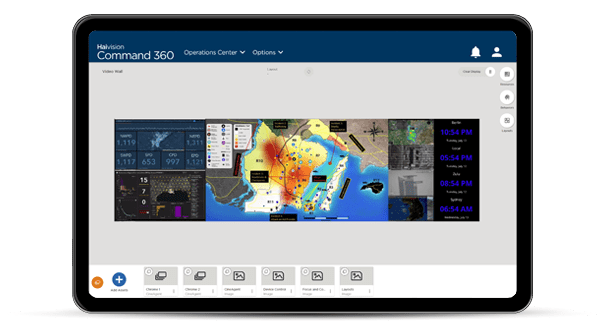If your control room space requires an LED video wall, you’ve likely run across the term “pixel pitch” while researching display options. Pixel pitch refers to the distance between the center of one pixel (or LED cluster) on a display to the center of an adjacent pixel. Since these are very small relative sizes, the measurement is expressed in millimeters (mm).
LED displays are built for a wide range of uses, from commercial TV displays to video walls, digital signage, billboards, and sports arenas. The clarity in any one of those use cases depends on the display’s pixel density. It’s important to remember that pixel pitch correlates directly to the size of your display and the optimal viewing distance of employees, operators, and decision makers.
What Does Pixel Pitch Actually Effect?
Simply put, the smaller the pitch measurement, the greater density of pixels are used to create the image on your display. A smaller pixel pitch results in a higher resolution image on the display. For example, a 1mm LED display will produce 2.75x the overall resolution of a 1.5mm LED display. Comparing those differences across a larger video wall, you’ll notice the clarity in the presentation between pitches quite easily. At the ideal viewing distance to a 16’x9’ video wall, a 1mm pixel pitch produces a resolution close to a UHD 4k display. In contrast, a 20mm setting on the same wall and distance reduces the resolution substantially.
A video wall display with a lower pixel pitch costs more than a display with a higher pixel pitch. As you plan out your new control room, be aware of the cost that comes with establishing the right level of visual acuity for operators.
How Do You Know the Appropriate Pitch?
It’s essential to partner with a reliable visualization solutions provider who has the experience to recommend the proper displays for your use case and environment. Even before meeting with the professionals, you can start to document your needs. One way to ballpark the right pixel density you’ll require is to apply the 10x method – multiplying the pitch by 10 gives you an approximate measurement, in feet, for the approximate optimal viewing distance. Along with determining the viewing distance, you’ll need to be sure that LED panels make the most sense for your room. Do you need minimal or virtually no bezels? Are you viewing data on spreadsheets or SCADA layouts? How big of a factor is cost in your decision?
While there are plenty of additional elements to consider in your future video wall system, understanding what pixel pitch is and how it matters relative to your needs is an important step to plan out your control room’s overall size. The professionals at Haivision are here to address every question you have while also guiding you through every question you may not yet realize you need to ask. Contact us and let us know how we can help!
